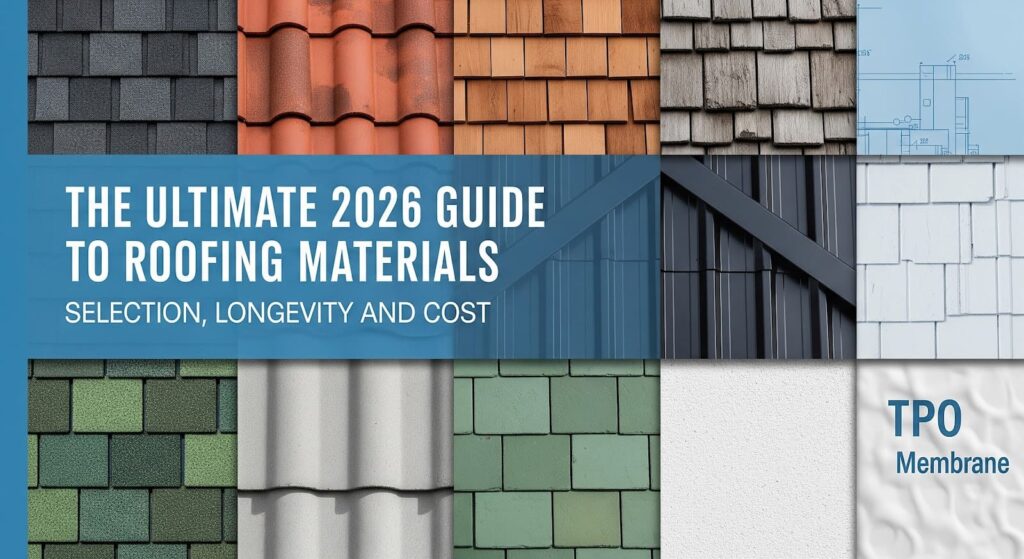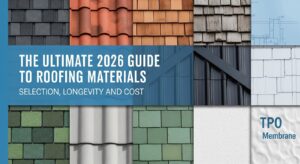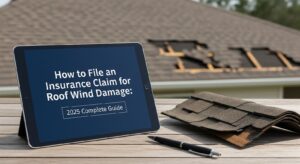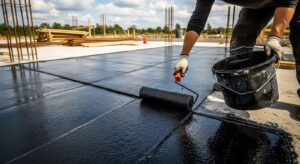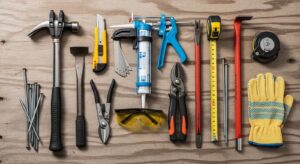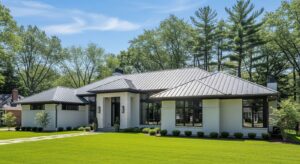Introduction
Replacing your roof is one of the biggest decisions a homeowner will make, and it’s especially important in the U.S. Southeast—Florida, Georgia, and South Carolina. The region’s unique climate, characterized by intense heat, high humidity, and the threat of hurricanes, demands roofing materials that can handle these challenges.
In this guide, we’ll help you navigate your options for 2026, highlighting roofing materials that offer durability, energy efficiency, and compliance with local building codes.
Why Southeast Roofs Face Unique Challenges
Understanding Southeast Roofing Threats
The unique subtropical and coastal climate of the Southeast creates conditions that aggressively accelerate material degradation, demanding specific material choices and installation practices.
The Impact of Heat and UV Exposure
The intense heat and year-round solar exposure in the Southeast can cause roofing materials to degrade faster than in other regions. During the summer, roofs can exceed 150°F, leading to the breakdown of materials like asphalt shingles. To combat this, many homeowners opt for cool roofing materials, which reflect solar energy and help reduce cooling costs. Learn more about cool roofs and their benefits on Energy.gov.
Humidity and Algae Growth
With high humidity comes the risk of mold, mildew, and algae, especially Gloeocapsa magma, which thrives on the limestone found in traditional asphalt shingles. This can cause unsightly streaks on your roof and potentially shorten its lifespan. To prevent this, algae-resistant shingles or moisture-resistant materials are essential. For more on algae-resistant shingles, check out Owens Corning’s.
Wind and Hurricanes
The Southeast is no stranger to powerful hurricanes, and roof failure is often a significant cause of damage during these storms. Roofing systems need to withstand wind speeds of 110 mph to 160 mph, especially in coastal areas. Materials like metal roofing and tile are highly effective at resisting high winds and debris impacts. Visit NRCA for more on roofing solutions for hurricane-prone areas.
2026 Building Code Compliance: What You Need to Know
In the Southeast, especially coastal Florida, strict building codes override other considerations. Understanding the mandated installation requirements is paramount, as compliance dictates both cost and resilience.
Florida Building Code (FBC) 8th Edition
The FBC, in its 8th Edition (2023), introduces stricter guidelines for roofing systems to ensure they can withstand extreme weather events. These updated codes emphasize better performance, especially in areas prone to hurricanes. For a detailed overview of the latest roofing code updates, refer to Florida’s Building Code website.
Key Wind Uplift and Fastening Requirements
In high-risk hurricane zones like South Florida, the Florida Building Code requires specialized installation techniques. This includes a minimum of six nails per shingle and additional waterproofing layers, especially in high-velocity hurricane zones (HVHZ). For more on the installation standards in the Southeast, check out Miami-Dade’s official roofing guide.
What Is The Best Roofing Materials for 2026
Choosing a material for the Southeast involves a critical balancing act between initial cost, necessary climate resilience (algae and heat resistance), and storm performance (wind and impact ratings).
1. Asphalt Shingles (Algae-Resistant)
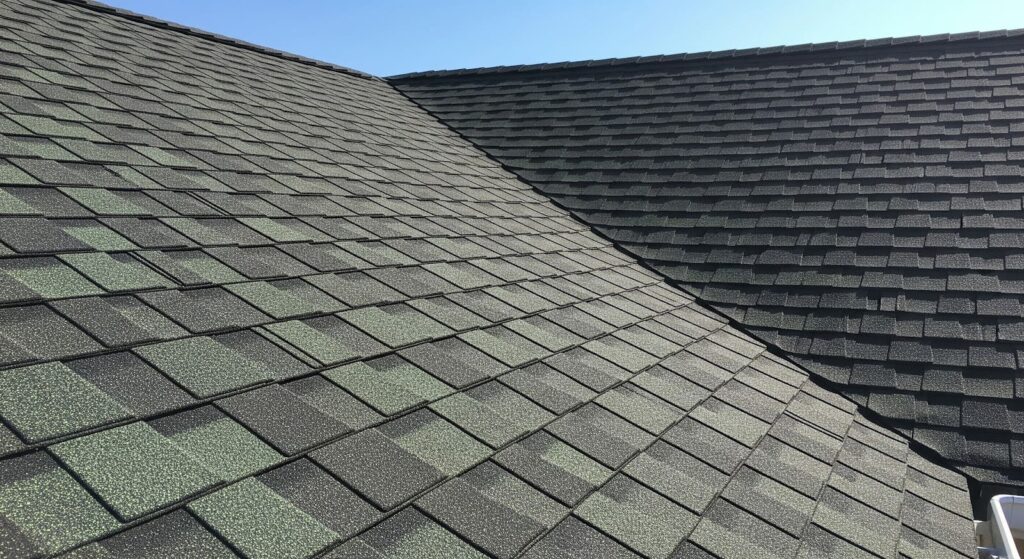
Asphalt shingles remain a popular choice due to their affordability, with prices ranging from $4 to $6 per square foot. However, in humid climates like the Southeast, algae-resistant shingles are a must. These shingles are infused with biocides, like copper granules, to prevent algae growth. For more information, visit Owens Corning’s algae-resistant roofing solutions.
Pros
- Affordable
- Easy to install
- Quiet roofing option
Cons
- Vulnerable to heat and humidity
- Requires algae-resistant treatments
2. Metal Roofing (Standing Seam)
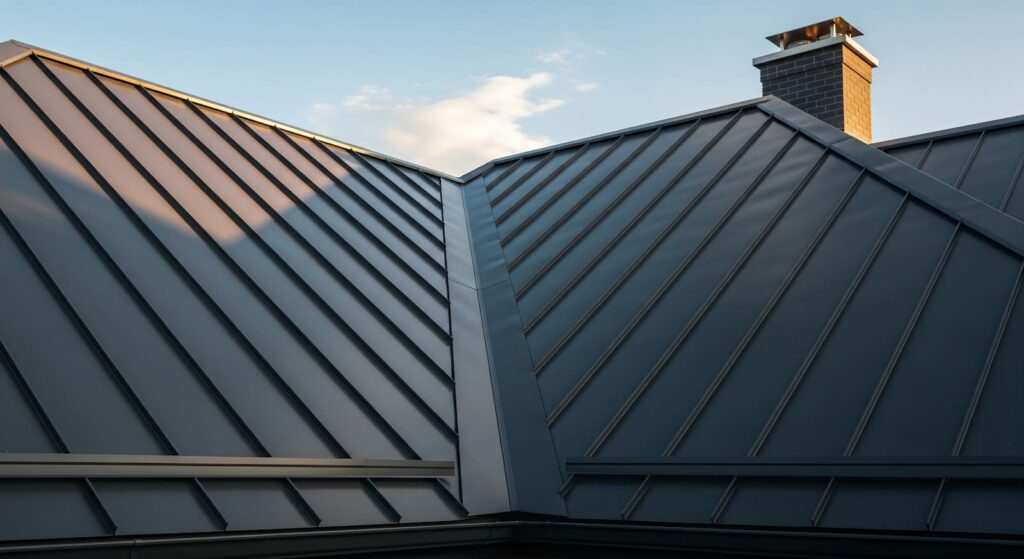
Metal roofing is a high-performance option for those in hurricane-prone areas. With prices ranging from $10 to $20 per square foot, metal roofs are highly durable and can withstand winds up to 160 mph. They are also energy-efficient, as their reflective surface helps to reduce cooling costs.
Pros
- Excellent wind resistance
- Reflects heat, reducing cooling costs
- Low maintenance
Cons
- Higher initial cost
- Requires specialized installation
3. Concrete and Clay Tile
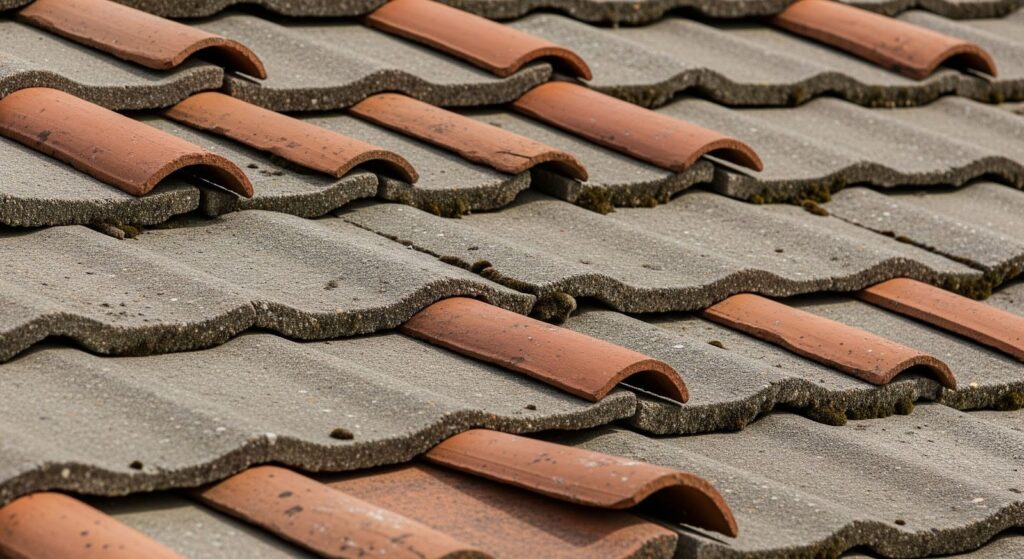
Tile roofing, especially concrete and clay tiles, offers superior durability and resistance to UV damage, making it a great option for the Southeast. With a lifespan of 50+ years, these materials are perfect for areas that experience extreme weather. However, their weight may require additional structural reinforcement.
Pros
- Exceptional durability
- Natural resistance to algae and mold
Cons
- Heavy weight requires extra structural support
- Higher installation costs
4. Synthetic and Composite Shingles
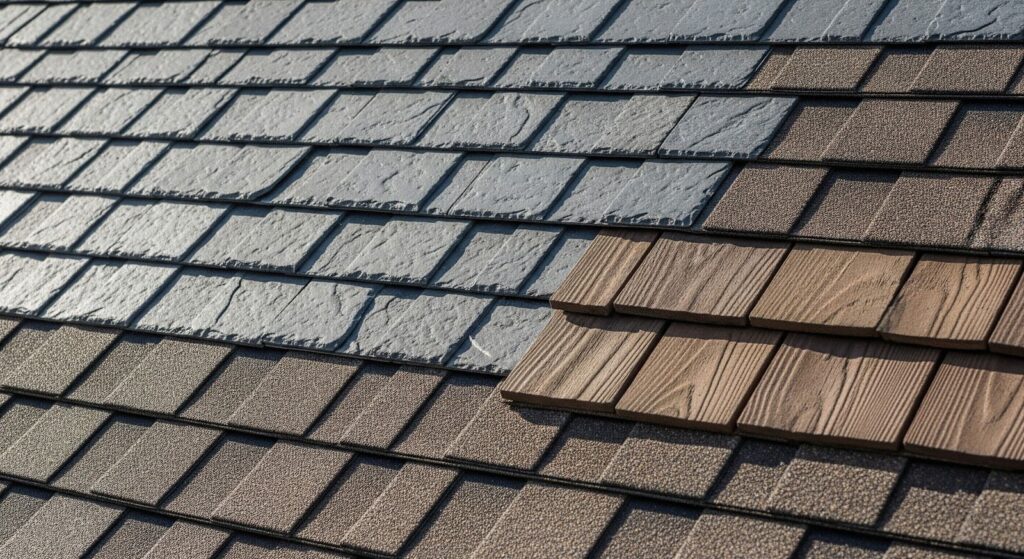
Synthetic shingles are lightweight and durable, mimicking the look of premium materials like slate or cedar shake. Prices range from $6 to $14 per square foot, and they’re ideal for homeowners seeking impact-resistant options.
Pros
- Lightweight and impact-resistant
- Aesthetic variety
Cons
- Quality can vary by manufacturer
- Not as long-lasting as metal or tile
What is the ROI for a new roof?
Roofing Material Cost Breakdown (2026)
| Material Type | Typical Lifespan | Avg. Cost/Sq. Ft. Installed (2026 Est.) | Southeast Climate Performance |
| Asphalt (Standard AR) | 20–25 Years | $4.00 – $6.00 | Fair: Requires Algae-Resistance coating; vulnerable to heat. |
| Asphalt (Class 4/SBS) | 25–35 Years | $6.00 – $10.00 | Good: Better impact resistance; insurance credit potential. |
| Metal (Standing Seam) | 40–70 Years | $14.00 – $20.00 | Excellent: Superior wind/heat reflection, moisture resistant, lightweight. |
| Concrete/Clay Tile | 50+ Years | $12.00 – $25.00 | Excellent: Exceptional durability and high-mass wind resistance. |
Long-Term Savings and ROI
While asphalt shingles are more affordable upfront, materials like metal or tile, although more expensive, offer long-term savings through lower maintenance costs, better energy efficiency, and insurance discounts.
Enhancing Roof Resilience and Securing Insurance Discounts
Impact Resistance with Class 4 UL 2218
Class 4 roofing materials are designed to withstand impacts from a 2-inch steel ball dropped from 20 feet, making them ideal for regions with frequent hail or debris. These shingles are eligible for significant insurance discounts. Learn more about Class 4 impact-resistant roofing from Underwriters Laboratories.
How Class 4 Materials Increase Roof Longevity?
Class 4 materials are engineered in specific ways to achieve superior toughness. This often involves embedding a reinforcing, polymer-based mesh into the back of the shingle or incorporating rubber-like polymers, such as SBS (styrene-butadiene-styrene), into the asphalt blend.This rubberizing effect makes the shingle more pliable and capable of recovering from impact. By resisting cracking and damage from hailstones and flying debris, these enhanced materials reduce the frequency of unexpected repairs and can significantly extend the overall lifespan of the roof.
Wind Mitigation and Insurance Savings
Installing wind-resistant materials can lead to significant discounts on your homeowners insurance. A wind mitigation inspection evaluates your roof’s ability to resist high winds and determines the level of savings you can expect.
Roof Maintenance Tips for Longevity
- Regular Inspections: Inspect your roof at least twice a year and after severe weather events.
- Proper Ventilation: Ensure your attic is properly ventilated to prevent moisture buildup.
- Algae Prevention: Install copper or zinc strips to prevent algae growth.
- Gutter Maintenance: Clean your gutters regularly to avoid water damage.
Which Insurance Certification Forms Should I Use?
Getting insurance credits depends a lot on the contractor’s paperwork. The contractor needs to fill out special forms, like the Impact-Resistant Roofing Installation Form (TDI form PC068 in some areas) or other forms required by insurance companies such as State Farm. If the contractor doesn’t complete and submit these forms correctly, the homeowner might lose out on the premium credit. This highlights the importance of hiring a skilled roofing professional who understands the process.
Summary of Wind Mitigation and Insurance Discounts:
| Feature/Upgrade | Requirement Standard | Impact on Roof Resilience | Potential Insurance Benefit |
| Class 4/SBS Shingles | UL 2218 Class 4 | Superior protection against hail and debris. | Significant premium credits and deductible reduction. |
| Advanced Underlayment | FBC R905/HVHZ | Protects home from water intrusion even if roof covering is lost. | Qualifies for secondary water resistance discounts. |
| Enhanced Fastening | FBC R908 (6 nails/shingle) | Increases shingle and deck resistance to wind uplift. | Essential data point for wind mitigation rating calculation. |
| FORTIFIED Designation | IBHS Certification | System-wide engineering creates a continuous load path. | Higher, sustained premium discounts in many states. |
Frequently Asked Questions
How often should my roof be inspected?
The roof should be inspected at least twice a year, ideally in the spring and fall, and always immediately following any severe weather event.
Can I install a new roof over my existing shingles?
It is strongly discouraged. While possible, the additional weight stresses the framing, and it prevents the contractor from inspecting the underlying deck for mandatory code-required upgrades and damage.
Is a Cool Roof worth the cost in Florida?
Yes. Cool roofs are most effective in hot, sunny climates like the Southern U.S. They reflect solar energy, reducing interior temperatures by reducing heat flow from the roof into the occupied space, thus decreasing air conditioning needs and utility bills.
What signs indicate I need a full replacement?
Look for missing or damaged shingles, curling or buckling shingles, extensive granule loss, leaks or water stains inside the home, or visible structural sagging.
Does a Class 4 roof really lower my insurance premium?
Yes. In many states across the Southeast, high-impact resistant Class 4 roofing materials qualify for significant premium credits from insurance carriers.
How long does the average roof replacement take?
The duration depends on the roof size and material complexity, but a standard residential roof replacement typically takes between three and five days.
What is the difference between HVHZ and WBDR zones?
HVHZ (High-Velocity Hurricane Zone) refers to specific coastal areas, primarily in South Florida, that require materials and installation techniques rated for the highest wind and debris resistance. WBDR (Wind-Borne Debris Region) covers the rest of the state, with slightly less stringent but still demanding code requirements.
Should I hire a roofing contractor or DIY my repairs?
Hiring a professional roofer is generally recommended to ensure safety, proper installation, adherence to strict local codes, and to preserve material warranty coverage.
Conclusion
Choosing the right roofing material in the Southeast requires careful consideration of your home’s location and local climate conditions. Materials like metal roofing and tile roofing offer superior protection against heat, wind, and moisture, providing long-term savings and improved energy efficiency. By selecting a high-performance material, you not only protect your home but also secure potential insurance discounts.

